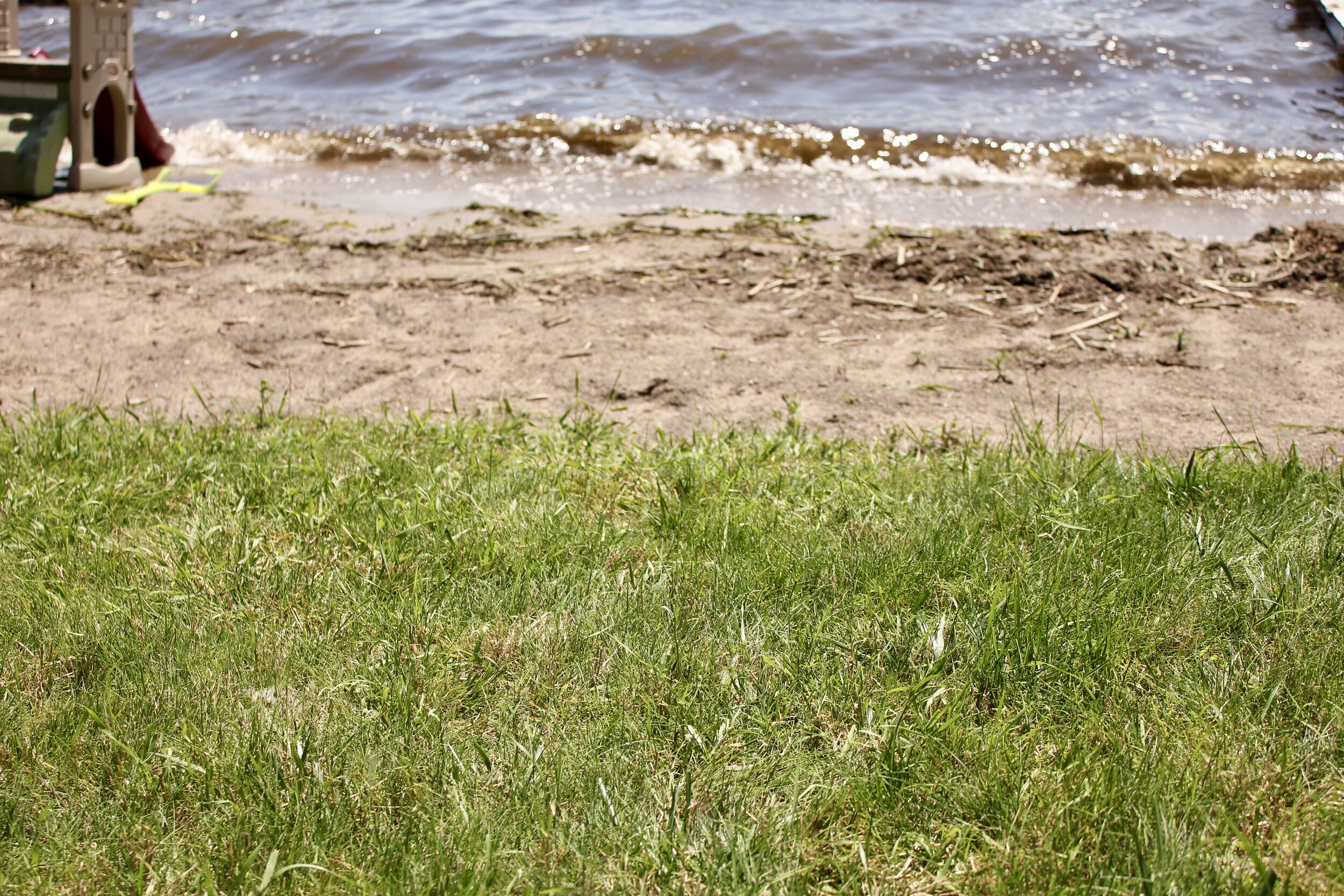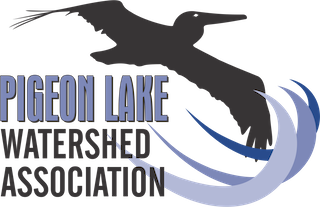
Maintaining Lake Lawns
Naturalize Your Lot: A guide to Lake-friendly Landscaping
Healthy Lake Lawn Tips: Spring into Action - Getting to the Root of the Matter.
Be Lake Informed
Assess Your Lot
Obtaining Permits
Minimizing Your Footprint
Shoreline Restoration
Planting for the Lake
Preventing Noxious Weeds
Maintaining Lake Lawns
The soils' food web involves complex and highly organized sets of interactions and processes among plants, bacteria, fungi, protozoa, nematodes and other soil microbes. These beneficial organisms exist in symbiosis with plants. Most vegetables, annuals, and grasses do best in bacterially dominated soils.
Still Have Questions?
While lawns provide us with a beautiful space to enjoy the lake, they are not beneficial in protecting the health of the lake. Typical city lawns comprised mostly of Kentucky Blue-Grass do not absorb runoff and act similarly to hard surfaces. Therefore, unused lawn spaces should be naturalized, and the remaining lawn left lake-friendly to reduce the runoff into the lake.
Creating a Healthy Lake Lawn
Native Grasses
Native grasses have a longer root system which traps runoff better, helps prevent erosion, and are therefore more drought tolerant. They also look just as beautiful as classic turf lawns (see the picture at the top of this page)! Over-seed existing lawn or creating new lawns using drought tolerant species such as Creeping Red Fescue, Tall Fescue and Ryegrass. Kentucky bluegrass has a short root system and requires more nutrients and water for vigour, so no more than 10% Kentucky blue grass is recommended.
Information on the Pigeon Lake Grass Seed Mix
Incorporating Clover
Clover is a good companion for grass. It fixes atmospheric nitrogen to the soil thereby acting as a natural fertilizer. Consider incorporating at least 5% of the seed mix as white or dutch clover.
Maintaining a Healthy Lake Lawn
Watering
The rain should provide sufficient watering for lawns with native grasses. However, for dry stretches of weather or for turf lawn varieties water deeply, slowly, and infrequently. This encourages roots to grow deeper and allows for better water absorption.
Mowing
Set the blades to cut grass at 2-3” high to crowd out weeds, encourage longer roots, and to shade the soil. As well, using a mulching mower and leaving grass clippings on the lawn to decompose and become a natural fertilizer.
Sharpen the blades and clean the mower often to reduce the chance of introducing diseases. Consider switching to a light wight mower to reduce emissions, noise, and costs.
Composting
Composting can be used as a lake-friendly fertilizer as most municipalities and summer villages around the lake have fertilizer bans. It uses the nutrients already in the watershed instead of adding additional nutrients
FAQ - Is there a fertilizer ban in my community?
Dandelions
Friend or Foe?
Although they are often thought of as weeds, dandelions can be beneficial. Dandelions bloom early during the spring which is good for pollinators. They also have long tubular roots which aerate the soil and help bring up nutrients from deeper down. Therefore, consider leaving some dandelions in your lawn.
Removal Tips
For Driveways and walkways, pour boiling water on them. It will kill off grass and other vegetation as well, so be careful with where it is used.
For Gardens, block the sun by covering dandelions with mulch or tarps if possible. This can also be used on driveways and walkways.
For Lawns, mow before dandelions go to seed to prevent the spread. Try pouring a vinegar solution on them. As well as, over-seed with a native grass to crowd out the dandelions.
For edges and borders, pull them out by the roots.
Spring Lawn Care
Timing
In early spring, many people like to "clean up" yet many good bugs (such as lady bugs who eat aphids) begin life in the collections of leaves and debris at the base of trees and bushes. Generally, they mature enough to move on around the May long weekend. Try to leave the leaves around the outer edges of the lawn and at the base of plants until closer to the long weekend.
De-thatching
The goal is to scratch the surface and to collect any clumps of extra dead material on the lawn and to break up the dead material so it does not create a barrier for meeting its needs. This allows air, nutrients and water to get down to the grass roots, as well as helps to reduce the soil compaction. This can be done using a rake, power rake, or hiring a local firm to aerate your lawn.
Grass Seed Suppliers
For a Pigeon Lake specific native grass seed mix email info@plwa.ca for purchase. The grass seed contains a mix of Sheep fescue, various types of Bluegrass, June grass, and Wheatgrass. ALCLA Native Plants provide native plants, seeds, and plugs for naturalization projects.
Hannas Seeds 5039-49 St, Lacombe, Alberta | Phone: 403-782-6671 | Toll Free: 800-661-1529
Hannas Seeds is a retailer, wholesaler, and exporter of alfalfa, clover, grass seeds, and several forage, lawn, pasture, and native grass mixtures.
Apache Seed 10136 10136 149 St NW, Edmonton, AB T5P 1L1 | Phone: 780-489-4245
Ask for Pigeon Lake Blend which is a mix of Fescues ($6.50 / lbs). Call ahead to verify inventory.
Pigeon Lake Blend contains 40 Creeping Red Fescue | 20 Sheep's Fescue | 20 Tall Fescue | 20 Perennial Rye GrassConsider a 10% admixture of Dutch White Clover to add soil nitrogen for a very lake friendly lawn
Brett Young RR #4, Hwy 60 & Hwy 39, 49469 Rge Rd 263 Calmar, AB T0C 0V0 | Phone: 780-985-7300
Provides various grass seeds and mixes in 10 lbs and 50 lbs bags, great for contractors and municipalities. They have a great selection of native grasses and clover for custom seed mixes orders.
T9 Drought Tolerant Seed Mix contains 35 Aberdeen Creeping Red Fescue | 25 Shaddow III Chewings Fescue | 20 Sheep Fescue | 20 Hard Fescue
PLWA Self-Guided Property Assessment Tool
All over the provinces the impacts of polluted runoff are being felt in the form of algae blooms and water too polluted to use for crop irrigation.
- Alberta Clean Runoff Action Guide

